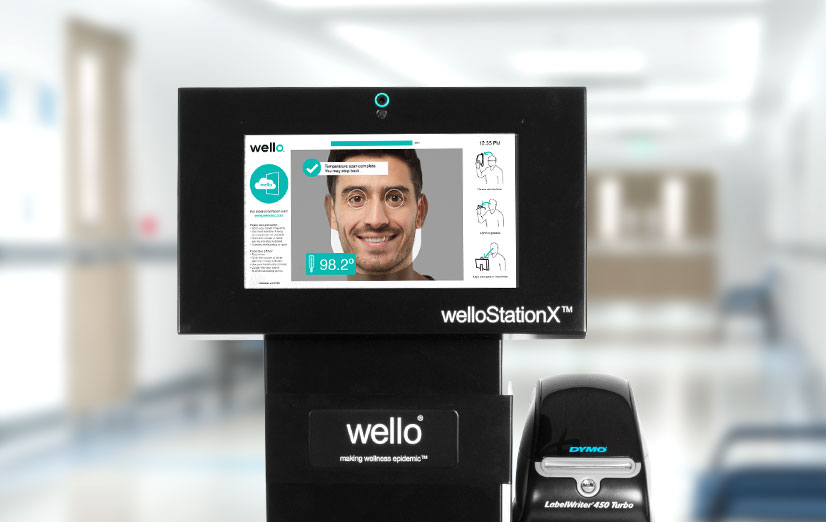CDC Infection Control Prevention

When thinking about what makes an exceptional patient experience, the first thoughts that come to mind might revolve around quality of care, bedside manner, facility upkeep, and other elements of a patient’s time while being treated. One factor that perhaps could have been taken for granted prior to the pandemic, though, is visitors.
Visitation is an integral part of the overall patient experience, and a part that has rarely been missing until recently. Family and friends provide patients with a sense of normalcy, comfort, and reassurance.
While preventing Covid-19 hospital-acquired infections is the reason for pausing (or greatly limiting) visitors, it would be shortsighted to ignore the threat of other contagious illnesses like the flu – experts warn the upcoming season could be a bad one – when making plans to allow them once again.
In this post, we will take a look at some of the CDC’s recommended infection control and prevention practices for allowing visitors in healthcare settings, and look at how the procedures can stick around permanently to prevent the spread of HAIs well into the future.
Visitors should be screened and restricted from visiting, regardless of vaccination status, if they have Covid-19, symptoms of Covid-19, or prolonged close contact with someone who has Covid-19.
This one is straight forward, and how many medical facilities have approached even out-patient appointments. Everyone entering the facility, visitors especially, should take a health screening asking about exposure and symptoms, even if fully vaccinated.
While the suggestion is specifically geared toward Covid-19, symptom screenings can be effective for preventing the spread of other contagious illnesses as well. No visitor with any symptoms of any contagious illness should be allowed in.
A key part of this entry screening process is temperature checks. With fever being the leading indicator of contagiousness, there is no reason for facilities to ever stop temperature checks for visitors and staff. By stopping infectious individuals at the door, the chance of HAIs being spread is reduced.
Full vaccination for visitors is always preferred, when possible.
The CDC suggests all visitors be fully vaccinated. Requiring this will greatly limit the chances of someone with an active Covid-19 entering the facility and potentially spreading it to others. One way to check this is to ask visitors – as a part of the entry screening process – whether or not they are fully vaccinated.
Additionally, facilities should continue to promote and provide vaccinations for all employees, as well as encourage vaccination for all patients who are not yet vaccinated – except in certain situations.
Keeping detailed records of which patients are fully vaccinated and which are not can help healthcare providers to make smart decisions about visitations, and how they should be conducted.
Facilities should have a plan to manage visitation and visitor flow.
The CDC recommends that regardless of vaccination status, visitors should maintain 6 feet of distance from other patients/residents that they are not visiting, as well as healthcare personnel. They also should practice good hand hygiene and wear PPE, like masks. In order to accomplish this, facilities might need to limit the number of visitors allowed in the building at one time.
By maintaining social distancing guidelines, medical facilities will not only protect staff and patients from Covid spread, but also from the spread of other infections.
Limiting the number of visitors a patient can have at one time might not be the visitor experience of pre-pandemic, where in some cases entire families could show up at once, but ultimately everyone is safer from potential infection spread.
If the patient/resident is in a single-person room, visitation could occur in their room. Visits for patients/residents who share a room should ideally not be conducted in the patient/resident’s room.
Ideally, visitors should only be in the same room as the patient they are visiting (and accompanying visitors). This limits other patients’ exposure to potential illness carriers. However, if neither of the patients are able to leave the room, other steps should be taken like social distancing and PPE.
One way to make this easier, if the patient/resident is in an acceptable condition to leave the room, is to have designated private visitation rooms. If possible, it’s a good idea to schedule out visits in the rooms so there aren’t instances of multiple visits happening at once.
The one case where the CDC suggests there shouldn’t be leniency with visitors in a room with multiple patients is when one of the patients isn’t vaccinated against Covid-19. In this instance the risk is too great and other accommodations should be made.
Ultimately, these recommendations by the CDC are in direct response to Covid-19. However, HAIs and the spread of contagious illness has been an existing challenge for healthcare providers well before the pandemic. By implementing these strategies, like symptom and temperature screening, permanently, medical facilities of all sizes can help prevent the spread of dangerous infections.





